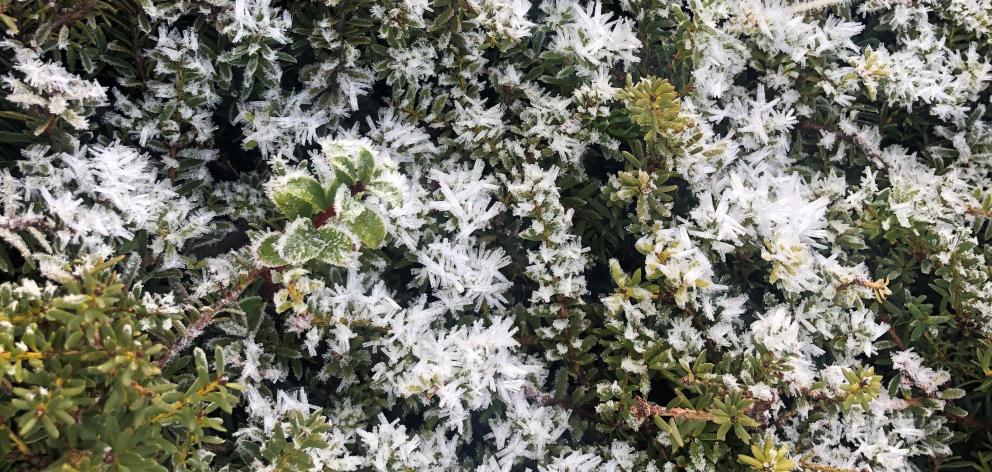
We were based in Twizel, travelling between Ohau and Mt Cook. Twizel was filled with low-hanging cloud for the entirety of our visit — the days not warming past a few degrees. Ohau and Mt Cook were above the cloud and we were able to enjoy crisp blue skies and glorious mountains.
As we wandered around the district, I was struck with how much life there was despite the freeze — plants in limbo waiting for spring, birds scuttling and ubiquitous plump rabbits.
The landscape of the Mackenzie Country is hard to ignore, and a great reminder to get off our phones and enjoy the nature that surrounds us.
Wandering the tracks and admiring the ice crystals which had formed on the leaves of native bushes and on the branches of deciduous plants, I remembered the wonderful botany lectures I had with the late Prof Peter Bannister on ecosystems and how plants withstand freezing temperatures.
For me, the South is home, and I figure, at an emotional level, I have evolved to be comfortable in the cold. At a physiological level, humans across the globe are similar — it takes a season or so to adjust to a new environment. We might complain, but we can move inside and turn the heater on.
Not so for plants — transplant a tropical northern plant or a coastal plant into the Mackenzie Country and it would be lucky to survive one night. Transplant a plant from the Mackenzie country into the boreal snow forests of Canada and it might not survive a night either.
A plant’s ability to survive cold is conveyed firstly by its genetic make-up, and secondly by whether it has had a chance to acclimate. For many plants, maximum freezing tolerances are not constitutive, but induced in response to low, non-freezing temperatures (below approximately 10degC). For instance, wheat plants grown at normal warm temperatures are killed by freezing at -5degC, but after cold acclimation, they can survive freezing temperatures as low as -20degC.
As seasons change, plants acclimatise to these freezing temperatures by accumulating certain proteins which make cryo-protectant compounds and stop the cells from freezing.

A plant’s morphology can also influence its ability to withstand cold temperatures. Some species reduce their leaves and go dormant, while others produce a protective wax layer on their leaves or are more compact in order to avoid wind exposure.
Regardless of a plant’s survival mechanism, it makes for wonderful viewing and pondering.
As New Zealand’s climate warms, we often consider what that might mean for droughts and flooding and the implications for horticulture and agriculture.
How much attention do we pay to what it might it mean for our alpine ecosystem? Interestingly and almost counterintuitively, snow insulates and protects alpine plants from the harshest conditions of winter. Reduction of winter snow cover in New Zealand will potentially increase the severity of freezing experienced by alpine plants — this may be a critical factor affecting their survival and that of associated ecosystems — except for those plump bunnies. I feel sure they will hop on.
As we reimagine New Zealand and the tourism industry post Covid-19, can we reimagine a country where people visit to regenerate and recuperate rather than leap off bridges and consume? Instead of people spending thousands of dollars on meditation and therapy, can we drop them in the bush for a month to watch, listen, plant trees and appreciate? It seems to me, in modern times, our greatest need is to slow down — or perhaps this has always been so, for ‘‘to walk in nature, is to witness a thousand miracles’’ (Mary Davis, naturalist, 1830).
- Anna Campbell is managing director of AbacusBio Ltd, a Dunedin based agri-technology company.












